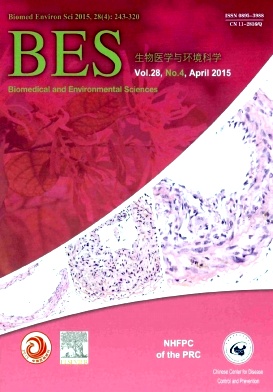The Benefit Risk Assessment of Consumption of Marine Species Based on Benefit-Risk Analysis for Foods (BRAFO)-tiered Approach
doi: 10.3967/bes2015.035
-
Key words:
- N-3 long-chain polyunsaturated fatty acid /
- Methyl mercury /
- Dioxin-like compound /
- Benefit-Risk Analysis for Foods (BRAFO) /
- Benefit risk assessment
Abstract: Objective To assess the net health effect caused by the consumption of specific marine species based on Benefit-Risk Analysis for Foods (BRAFO)-tiered approach.
Methods Twenty species were collected from the Zhoushan Archipelago, China. Concentrations of n-3 long-chain polyunsaturated fatty acids, methyl mercury (MeHg), and dioxin-like compounds (DLCs) in the samples were analyzed for benefit risk assessment based on BRAFO-tiered approach.
Results Based on the BRAFO-tiered approach, reference scenario (no intake) and alternative scenario (intake of specific species of 200 g/week) were determined. The exposure to MeHg/DLCs via alternative scenario of all studied species did not exceed provisional tolerable weekly/monthly intake. However, the adult population with high DLCs exposure in China would significantly exceed the upper limit of DLCs via an additional alternative scenario of some species such as Auxis thazard. The results of deterministic computation showed that alternative scenario of all studied species generated clear net beneficial effects on death prevention and child IQ gain.
Conclusion The alternative scenario of all studied species could be recommended to population with average DLCs exposure, and the reference scenario of species with relatively high DLCs concentration could be recommended to population exposed to high DLCs.
| Citation: | GAO Yi Xiong, ZHANG Hong Xia, LI Jing Guang, ZHANG Lei, YU Xin Wei, HE Jia Lu, SHANG Xiao Hong, ZHAO Yun Feng, WU Yong Ning. The Benefit Risk Assessment of Consumption of Marine Species Based on Benefit-Risk Analysis for Foods (BRAFO)-tiered Approach[J]. Biomedical and Environmental Sciences, 2015, 28(4): 243-252. doi: 10.3967/bes2015.035 |







 Quick Links
Quick Links
 DownLoad:
DownLoad: